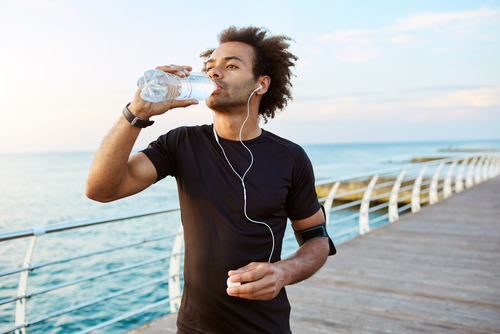
Breaking a sweat on an already-hot summer day may not always be appealing, but there are many safe ways to keep fit in the heat—no matter your age or activity level. Summit Health family medicine specialist Dr. Kimberly Barnum and internal medicine nurse practitioner Amber Gussoni offer the following tips on staying active, even when temperatures soar.
Get an early start
Fancy hitting the trails for a mind-clearing jog? Do your most strenuous exercise early in the morning or later in the evening. Try to avoid outdoor workouts at the hottest time of the day, which Gussoni says are usually between the hours of 10 a.m. and 3 p.m.
Hydrate yourself
As soon as you wake up, drink a full glass of water. To encourage yourself to drink more throughout the day, get creative, suggests Dr. Barnum. "Add fruit to it or get yourself a really fun water bottle so you don't forget to refill it."
If you're going to be exercising outside for a prolonged period of time, you'll want to replenish your electrolytes, too. Gussoni recommends sipping on a sports drink (also known as an electrolyte drink), as well as increasing your water intake.
Choose your exercise wisely
Dr. Barnum suggests staying cool with activities like water aerobics, swimming in the community pool, or strolling along the beach with your feet in the water. If it gets too hot out, take the fun indoors to an air-conditioned facility. From rock climbing and Zumba class to bowling or even strolling briskly around the mall, there are plenty of exercise options that allow you to stay cool.
Select a high-protective sunscreen
Choose a broad-spectrum sunscreen with SPF 30 or higher that protects your skin from UVA and UVB rays. And if you plan to get wet or sweat a lot, consider a sunscreen that is labeled as water-resistant. Remember that the higher the SPF the more protection. Therefore an SPF of 50 is even better than an SPF of 15.
Apply sunscreen properly
Make sure you protect all parts of your body not covered by clothing. When it comes to how much, remember the "teaspoon rule”:
- 1 teaspoon of sunscreen to the face and neck
- 2 teaspoons to the chest and abdomen
- 2 teaspoons for the back
- 1 teaspoon to each arm
- 2 teaspoons to each leg
And remember to take the bottle of sunscreen with you to wherever you're going, as you'll have to reapply after about every two hours.
Dress for the weather
Reduce your risk of overheating by choosing light-colored, loose-fitting, and moisture-wicking clothing. Invest in pieces with natural fibers like cotton that can help you stay cool and comfortable. Consider clothes with built-in sun protection during the day and reflective gear if you'll be working out before sunrise or after sunset.
Snack smart
Rather than reaching for sugary snacks after your workout, try a juicy piece of fruit from your local farmers market, suggests Dr. Barnum.
Exercise safely during pregnancy
If you are healthy and your pregnancy is normal, it is safe to continue or start regular physical activity. But, don't attempt exercise that's more strenuous than what you did pre-pregnancy. "Listen to your body, take breaks, and have a rest day when needed," says Gussoni.
Consider exercises that limit risk of injury such as walking, riding on a stationary bike, or yoga. If it's very hot out, stay inside where it's cooler, or consider water aerobics, which is especially easy on the joints.
Considerations for older adults
Some medications can make seniors even more susceptible to the heat and at higher risk of becoming dehydrated. Other types of medications may require seniors to stay out of the sun entirely. Fortunately, there are many indoor training and exercise programs that are focused on the needs of older adults. Try yoga, Tai Chi, or working with free weights to help build muscle, improve balance, and increase flexibility. And consult with your doctor if you have any specific questions.
